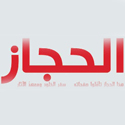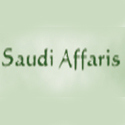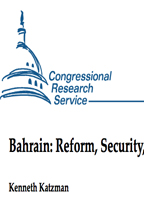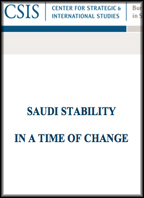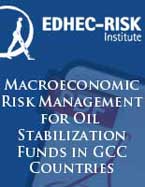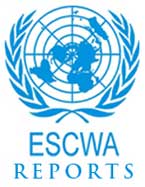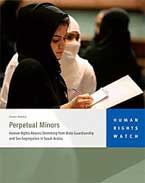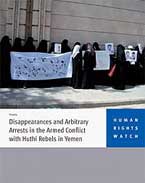Saudi Arabia, fortified by its oil wealth, Wahhabi ideology and blanket American protection, finds itself drifting in the uncharted waters of a new Arab awakening fashioned in revolt.
SAUDI ARABIA APPEARS FROM THE OUTSIDE AS A BEGUILING FORTRESS HOUSING A remote Kingdom guarded by robed, well-oiled royals. This desert fortress is sustained by unlimited hydrocarbon resources, bringing fabulous wealth to its intoxicated rulers and sedating the inhabitants. Minarets serve as watchtowers of orthodoxy and dogma. The fortress has also remained strong because of a protective alliance with a foreign power, the United States (US), that chooses a romanticised vision of a kingdom that offers harmonious exchange and a false sense of security.
But the waves of revolution, dissent and sedition are lashing against the fortress’s very foundations, deepening cracks of this political structure built on shifting sand. King Abdullah and his thousands of royal brothers, nephews and assorted hangers-on have watched the fall of fellow dictators, Zine El Abidine Ben Ali of Tunisia and Hosni Mubarak of Egypt. Others in their death throes, like Muammar Al Gaddafi of Libya and Ali Abdullah Saleh in Yemen, refuse to see the writing on the wall. The Saudi Royals’ younger brother King Hamad bin Isa Al Khalifah of Bahrain, kowtowing to Saudi diktat, has now made his choice by inviting Saudi military into his troubled land. Even the docile Jordanian monarch Abdullah II and his normally forgotten brotherly neighbour Sultan Qaboos bin Said Al Said of Oman are floundering.
No state in the Arab world is being spared the sudden wrath of its people. The old strategic criteria of dividing the region on the basis of oil versus non-oil states, or of alliances with the United States, now fails to hold water. There are no longer any guarantees, with or without American support, for protecting regional rulers from the legitimate demands of their people. The people have made common cause, rising from years of misrule and repression, through the use of new technologies in new media adopted by young people. The demographics of the population are simply too lopsided in favour of younger generations versus the old ruling oligarchy. All these factors are plentiful in the Kingdom of Saudi Arabia: a youthful majority, an abundance of computers, and deepening social and political resentments and alienation.
The Saudi Kingdom contains within its fortress walls a deeper rot: an arbitrary coercive and corrupt system that denies its subjects its fundamental political rights and social justice. The Saudi royals do not even grasp what it is that their people are demanding. Facebook, YouTube and Twitter have all helped bring down the walls of opacity. The seventy percent of the Kingdom’s population who are under the age of thirty are predominantly Internet savvy.
They are asking for the creation of a constitutional monarchy, parliamentary elections, the release of thousands of political prisoners being held without trial or representation, an end to the endemic and massive royal corruption, reform of the judiciary and the minimising of perks and privileges afforded the 22,000 members of the House of Saud, as well as meeting demands to curtail the influence of the religious establishment.
Talk of a ‘Day of Rage’ scheduled for March 11 captured the world’s attention. To stop the increasingly corrosive developments, the Saudi state has equipped itself with the biggest carrot and largest stick in the Arab world. The carrot comprises the king’s promise of 37 billion dollars to his country’s agitated younger generations – a fifteen percent pay raise for government employees, aid for students and the unemployed, and access to sport clubs - something that only a Croseus-rich monarch like King Abdullah could hope to deliver. Nowhere are subjects offered such largess to buy off their loyalties.
Since thousands of voices using Twitter, Facebook and YouTube expressed ingratitude for such a ‘benevolent’ act, the state then decided to deploy its catch-all religious fall-back to warn its subjects that demonstrations and protests are un- Islamic. Using the pretext of the Saudi Kingdom as the ultimate guardian of the Islamic faith and custodian of the holy mosques, the state claimed to be protecting its population from the sins of other Middle Eastern youth. There have been in recent days mass arrests of those calling for reform, and multiple websites have been blocked. The Saudi bogeyman, thousands of security forces backed by armour on the street and helicopters hovering over city skies, act as an iron-fisted warning against any dissent. The Saudi rulers are beyond the reproach of their people.
Meanwhile the United States, traditional protector and ‘custodian of the holy oil fields,’ has lapsed into diplomatic torpor. The US has guarded the Kingdom from external threats through the sales of hundreds of billions of dollars of high-tech arms. Since 1945, the stationing of American forces in Dhahran near the critical oil fields have been crucial for Saudi security and are the lifeblood of American and world economy. The US never alluded to the subject of democracy in its support of the Saudi rulers and deliberately did not deal with the people, remaining constant in their policy for the survival of the Al Saud. The pact between Riyadh and Washington was to always protect the Kingdom’s fortress and not to get embroiled with the multitude of tribes, sects, regions, and ethnic groups.
The big carrot and stick have bought the Saudi rulers a temporary sense of control. But the faces of millions of screaming, self-liberated Arabs beaming at them on the screens of Al Jazeera have increased the tension. Prince Naif, interior minister and crown prince in waiting, may continue to repeat the Kingdom’s slogan: “What we took by the sword, we will hold by the sword.” But the traditional sword is dull, limited, and unable to meet the challenges of the moment. The Saudi rulers are also using the sectarian discourse both for the US and for their Sunni populations, portraying the Shi’a as the scary spectre seeking dominance and a dangerous alliance with Iran. They also are using the divide and rule policy to warn their Sunni population against the internal Shi’a enemy.
The most challenging group to the Saudi rulers is currently the Shi’a, who constitute 75 percent of the population in the Eastern Province, the Kingdom’s main oil-producing region. The Shi’a were also the first to respond to the eruptions of demonstrations in the Arab region despite the legal ban on demonstrations. The Shi’a have experienced loss of lives and imprisonment since 1979 because of their defiance.
The strategic regional predominance of Saudi Arabia through its oil wealth has allowed the country’s rulers to freeze reform. This policy offers temporary political respite for the kingdom, but the frozen body politic is brittle and can easily break. The danger is that continued repression of peaceful protests can lead to violence and radicalisation. At the moment, Islamic extremism and Al Qaeda have no space in the Arab movements of the people, but if this desperation continues to be confined to computer screens while political representation and expression is forbidden, then Al Qaeda will find renewed space.
By Dr Mai Yamani



